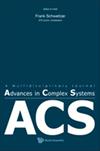Extracting Real Social Interactions from a Debate of CoViD-19 Policies on Twitter: the Case of Mexico
IF 1
4区 数学
Q4 MATHEMATICS, INTERDISCIPLINARY APPLICATIONS
引用次数: 0
Abstract
Twitter is a popular social medium for sharing opinions and engaging in topical debates, yet presents a wide spread of misinformation, especially in political debates, from bots and adversarial attacks. The current state-of-the-art methods for detecting humans and bots in Twitter often lack generalizability beyond English. Here, a language-agnostic method to detect real users and their interactions by leveraging network topology from retweets is presented. To that end, the chosen topic is COVID-19 policies in Mexico, which has been considered by users as polemic. Two kinds of network are built: a directed network of retweets;and the co-event network, where a non-directed link between two users exists if they have retweeted the same post in a given time window (projection of a bipartite network). Then, single node properties of these networks, such as the clustering coefficient and the degree, are studied. Three kinds of users are observed: some with a high clustering coefficient but a very small degree, a second group with zero clustering coefficient and a variable degree, and a third group in which the clustering coefficient as a function of the degree decays as a power law. This third group represents ∼2% of the users and is characteristic of dynamical networks with feedback. The latter seems to represent strongly interacting followers/followed in a real social network as confirmed by an inspection of such nodes. A percolation analysis of the resulting co-retweet and co-hashtag network reveals the relevance of such weak links, typical of real social human networks. The presented methods are simple to implement in other social media platforms and can be used to mitigate misinformation and conflicts. [ FROM AUTHOR] Copyright of Advances in Complex Systems is the property of World Scientific Publishing Company and its content may not be copied or emailed to multiple sites or posted to a listserv without the copyright holder's express written permission. However, users may print, download, or email articles for individual use. This may be abridged. No warranty is given about the accuracy of the copy. Users should refer to the original published version of the material for the full . (Copyright applies to all s.)从推特上关于CoViD-19政策的辩论中提取真实的社会互动:以墨西哥为例
Twitter是一个流行的社交媒体,用于分享观点和参与话题辩论,但它也存在广泛传播的错误信息,尤其是在政治辩论中,这些信息来自机器人和对抗性攻击。目前在Twitter上检测人类和机器人的最先进方法往往缺乏英语以外的通用性。本文提出了一种与语言无关的方法,通过利用来自转发的网络拓扑来检测真实用户及其交互。为此,选择的主题是墨西哥的COVID-19政策,这被用户认为是争议性的。建立了两种网络:一种是转发的定向网络;另一种是共同事件网络,如果两个用户在给定的时间窗口内转发了同一篇帖子,则存在一个非定向链接(二部网络的投影)。然后,研究了这些网络的单节点特性,如聚类系数和程度。我们观察到三种用户:一类用户的聚类系数很高,但程度很小;另一类用户的聚类系数为零,但程度是可变的;第三类用户的聚类系数作为程度的函数呈幂律衰减。这第三组代表了约2%的用户,是带有反馈的动态网络的特征。后者似乎代表了在一个真实的社交网络中强烈互动的追随者/追随者,通过对这些节点的检查证实了这一点。对由此产生的共同转发和共同标签网络的渗透分析揭示了这种弱链接的相关性,这是真实社会人际网络的典型特征。所提出的方法很容易在其他社交媒体平台上实施,可以用来减少错误信息和冲突。【来自作者】Advances in Complex Systems的版权是World Scientific Publishing Company的财产,未经版权所有者的明确书面许可,其内容不得复制或通过电子邮件发送到多个网站或发布到listserv。但是,用户可以打印、下载或通过电子邮件发送文章供个人使用。这可以删节。对副本的准确性不作任何保证。用户应参阅原始出版版本的材料的完整。(版权适用于所有人。)
本文章由计算机程序翻译,如有差异,请以英文原文为准。
求助全文
约1分钟内获得全文
求助全文
来源期刊

Advances in Complex Systems
综合性期刊-数学跨学科应用
CiteScore
1.40
自引率
0.00%
发文量
121
审稿时长
6-12 weeks
期刊介绍:
Advances in Complex Systems aims to provide a unique medium of communication for multidisciplinary approaches, either empirical or theoretical, to the study of complex systems. The latter are seen as systems comprised of multiple interacting components, or agents. Nonlinear feedback processes, stochastic influences, specific conditions for the supply of energy, matter, or information may lead to the emergence of new system qualities on the macroscopic scale that cannot be reduced to the dynamics of the agents. Quantitative approaches to the dynamics of complex systems have to consider a broad range of concepts, from analytical tools, statistical methods and computer simulations to distributed problem solving, learning and adaptation. This is an interdisciplinary enterprise.
 求助内容:
求助内容: 应助结果提醒方式:
应助结果提醒方式:


